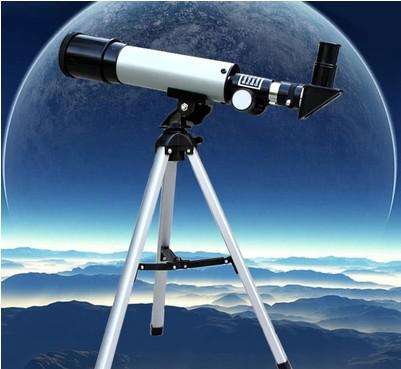(单词翻译:单击)
听力文本
This is Scientific American — 60-Second Science. I'm Christopher Intagliata.
To study the heavens, it's all about the photons. "We in astronomy are always greedy. We want every photon we can collect." Drew Phillips, astronomer at University of California Observatories. More photons, he says, basically means more science about incredibly faint, distant objects.
And that's where the optics problem comes in. Because incoming light reflects off several mirrors before it comes out the business end of a telescope. And mirrors aren't perfectly reflective. The traditional mirror coating, aluminum, reflects only about 90 percent of light. Bounce that light around a few times in a telescope, and you lose valuable photons.
"The throughput, the actual number of photons that are detected in the end in a modern spectrograph, you're doing good if you get thirty percent."
So you want the most reflective material for your mirrors. Like silver, which reflects 97 to 99 percent of visible and infrared light, respectively. Big improvement over aluminum. But silver's got problems too. "It is finicky. It's subject to tarnish, and oxidation, and corrosion."

So Phillips and his team have borrowed a trick from the computer industry, called atomic layer deposition. The technique allows them to take a silver-coated mirror—and coat it with extremely uniform layers of transparent aluminum oxide, to protect against corrosion.
And unlike the small-scale atomic deposition used in the electronics industry, this new machine--recently installed in a lab at U.C. Santa Cruz—is scaled up to coat mirror segments up to a meter in diameter. Meaning you could coat all 500 mirrors of a state-of-the-art telescope—like the planned Thirty Meter Telescope—in a matter of months.
When put to use, these better mirrors might allow astronomers to capture more photons... and shed more light—literally—on faraway galaxies and stars.
Thanks for listening for Scientific American — 60-Second Science Science. I'm Christopher Intagliata.
参考译文
这里是科学美国人——60秒科学。我是克里斯托弗·因塔利亚塔。
研究天空,就是研究光子。“我们天文学界的人都很贪心。我们想要我们能收集到的每个光子。”加州大学天文台的天文学家德鲁·菲利普斯说到。他说,收集更多光子意味着了解有关极其微弱且遥远物体的更多科学知识。
所以光学问题出现了。因为入射光在离开望远镜作用端之前,会被多个镜子反射。而镜子却无法完全反射。传统镜面涂层是铝,铝只能反射约90%的光线。光线在望远镜里来回反射几次以后,就会损失宝贵的光子。
“通光效率是现代光谱仪最终能检测到的实际光子数量,通光效率能达到30%就已经不错了。”
因此,人们想用反射效果最好的材料来做镜子。比如银,其能分别反射97%的可见光和99%的红外光。相比铝有了重大改进。但是银也存在问题。“银很麻烦。而且很容易失去光泽,也容易氧化和腐蚀。”
因此,菲利普斯和团队借用了计算机行业的一个“原子层沉积”技术。这种技术允许他们使用镀银镜子,并在镜子上涂上极为均匀的透明氧化铝层,以防止被腐蚀。
与电子工业中使用的小规模原子沉积不同,最近安装在加州大学圣克鲁兹分校实验室里的这台新机器,直径按比例被扩大到一米,以进行涂层操作。这意味着,你可以在几个月的时间内,为像计划中30米望远镜那样的最先进望远镜的全部500个镜子涂上铝层。
投入使用后,这些更优质的镜子可能会使天文学家捕捉到更多光子,并进一步了解遥远的星系和恒星。
谢谢大家收听科学美国人——60秒科学。我是克里斯托弗·因塔利亚塔。
译文为可可英语翻译,未经授权请勿转载!
重点讲解
重点讲解:
1. come in 出现;流行;
例句:It was just when geography was really beginning to change and lots of new ideas were coming in.
那时正是地理学真正开始发生改变、许多新观念兴起的时候。
2. be subject to 可能受…影响的;易遭受…的;
例句:The area is subject to devastating seasonal winds.
这个地区常遭破坏性季风的袭击。
3. scale up 增大;增加;提高;
例句:Many companies question their ability to scale up cost-effectively in both countries.
在这两个国家里,许多企业怀疑自己能不能以一种成本高效的方式扩大规模。
4. state-of-the-art 使用最先进技术的;体现最高水平的;
例句:It's a state-of-the-art security system.
这是最先进的安全系统。


